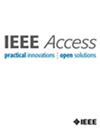Collaborative Autonomous Navigation of Quadrotors in Unknown Outdoor Environments: An Active Visual SLAM Approach
IF 3.4
3区 计算机科学
Q2 COMPUTER SCIENCE, INFORMATION SYSTEMS
引用次数: 0
Abstract
The development of an integrated path-planning and Simultaneous Localization and Mapping (ASLAM) system, specifically designed for the autonomous and real-time guidance of quadrotors navigating through unexplored outdoor environments helps to map the generation of unknown natural resources. To achieve this goal, a path-planning methodology that leverages system observability is exploited for a quadrotor. This path-planning method is underpinned by the eigenvalues of the Gramian matrix, which are used as a measure of system observability degree, to increase the precision of the quadrotor’s estimated position. In SLAM, high accuracy in the quadrotor’s state estimation improves the accuracy of the map landmarks position estimation. To enhance the accuracy and fortify system robustness, implementing a centralized distributed architecture within a group of three quadrotors is advocated. In this setup, the role of a central hub for information fusion from all agents and determining the most observable path for the entire group is assigned to the leader quadrotor. An assessment of the proposed path-planning method against a random path-planning approach within a single-agent architecture is conducted across various scenarios. This evaluation compares the Root Mean Square Error (RMSE) of the quadrotor’s state estimation. The results illustrate a notable improvement in accuracy. Furthermore, a comparison is conducted to assess the performance of the multi-agent architecture in contrast to the single-agent architecture using the proposed method. The simulation and experimental results confirm a better accuracy in all scenarios and highlight the increased robustness of the cooperative architecture, particularly in fault scenarios, compared to a single-agent architecture.未知室外环境中四旋翼飞行器的协作自主导航:主动视觉 SLAM 方法
开发路径规划与同步定位和绘图(ASLAM)集成系统,专门用于四旋翼飞行器在未开发的户外环境中自主实时导航,有助于绘制未知自然资源的生成图。为实现这一目标,四旋翼飞行器采用了一种利用系统可观测性的路径规划方法。这种路径规划方法的基础是格拉米安矩阵的特征值,格拉米安矩阵被用来衡量系统的可观测程度,以提高四旋翼飞行器估计位置的精度。在 SLAM 中,高精度的四旋翼飞行器状态估计可提高地图地标位置估计的精度。为了提高精度并增强系统的鲁棒性,建议在一组三台四旋翼飞行器中采用集中分布式架构。在这种结构中,领头的四旋翼飞行器被指定为中心枢纽,负责融合来自所有代理的信息,并为整个小组确定最可观测的路径。在单个代理架构中,对所提出的路径规划方法与随机路径规划方法进行了跨场景评估。该评估比较了四旋翼飞行器状态估计的均方根误差(RMSE)。结果表明,该方法显著提高了准确性。此外,还使用所提出的方法对多代理架构与单代理架构的性能进行了对比评估。仿真和实验结果证实,在所有情况下,多代理架构都具有更高的准确性,并且与单代理架构相比,合作架构的鲁棒性得到了增强,尤其是在故障情况下。
本文章由计算机程序翻译,如有差异,请以英文原文为准。
求助全文
约1分钟内获得全文
求助全文
来源期刊

IEEE Access
COMPUTER SCIENCE, INFORMATION SYSTEMSENGIN-ENGINEERING, ELECTRICAL & ELECTRONIC
CiteScore
9.80
自引率
7.70%
发文量
6673
审稿时长
6 weeks
期刊介绍:
IEEE Access® is a multidisciplinary, open access (OA), applications-oriented, all-electronic archival journal that continuously presents the results of original research or development across all of IEEE''s fields of interest.
IEEE Access will publish articles that are of high interest to readers, original, technically correct, and clearly presented. Supported by author publication charges (APC), its hallmarks are a rapid peer review and publication process with open access to all readers. Unlike IEEE''s traditional Transactions or Journals, reviews are "binary", in that reviewers will either Accept or Reject an article in the form it is submitted in order to achieve rapid turnaround. Especially encouraged are submissions on:
Multidisciplinary topics, or applications-oriented articles and negative results that do not fit within the scope of IEEE''s traditional journals.
Practical articles discussing new experiments or measurement techniques, interesting solutions to engineering.
Development of new or improved fabrication or manufacturing techniques.
Reviews or survey articles of new or evolving fields oriented to assist others in understanding the new area.
 求助内容:
求助内容: 应助结果提醒方式:
应助结果提醒方式:


